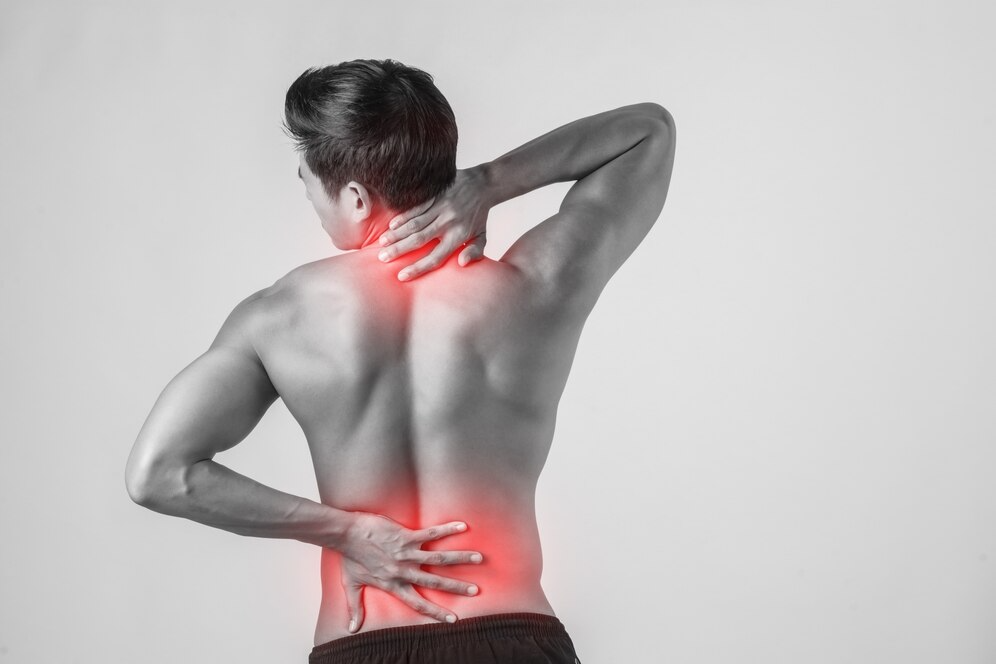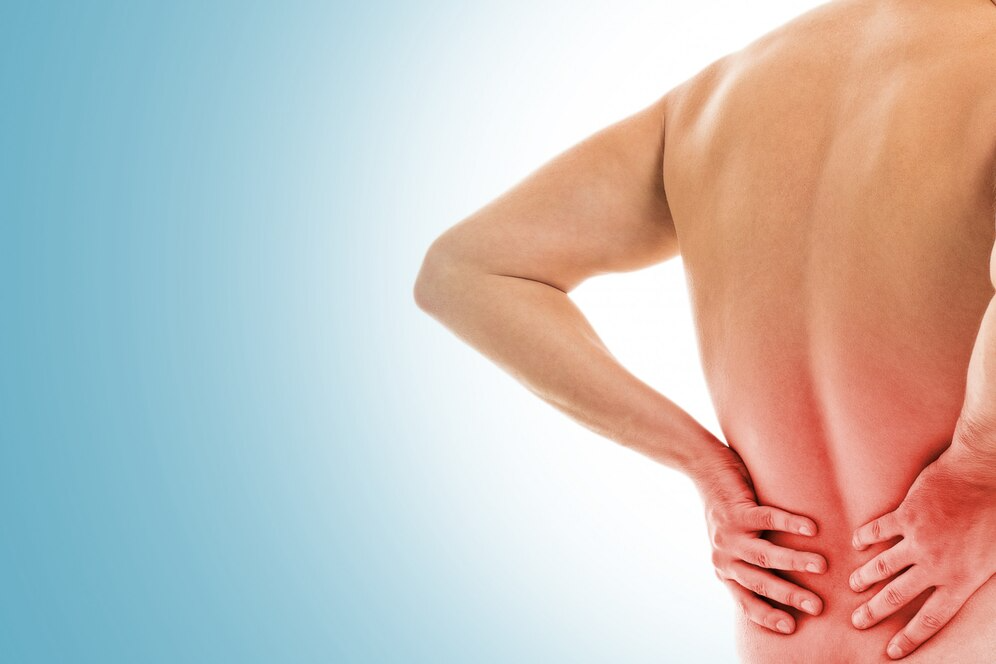Musculoskeletal Pain: Causes, Types, Symptoms & Treatment
Musculoskeletal pain may arise from joints, bones, muscles, ligaments, and tendons. These disorders are seen at large in the elderly population. Given the increasing proportion of older adults in the world population and the diseases among older adults, efforts must be made to maintain their functional capacity for as long as possible through proper health care. As this pain is associated with MSK disorders, it is a common medical and socio-economic problem worldwide. So, to understand musculoskeletal pain and how it can be treated, keep reading this article!
Table of Contents
What is musculoskeletal pain?
Musculoskeletal pain is muscle, bone, ligament, nerve, and tendon pain. It can be acute or chronic. The pain can range from mild to severe, hindering your daily life. It may start abruptly and be momentary, which is called acute pain. Chronic pain is something that persists for three to six months and more. You can feel this pain in one body area, like the back. But if you have a condition like fibromyalgia, then you will experience this pain throughout the body.
What are the types of musculoskeletal pain?
There are three types of musculoskeletal pain:
Nociceptive Musculoskeletal pain:
This type of pain is associated with tissue damage or any injury, like touching a hot stove or spraining the ankle.
Neuropathic Musculoskeletal Pain:
Pains like burning, stabbing, shooting, and prickling are often associated with neuropathic musculoskeletal pain to describe pain. Usually, this pain is observed to travel around the body or radially. Trigeminal neuralgia, diabetic neuropathy, and sciatica are diseases found in neuropathic musculoskeletal pain.
Noci Plastic Musculoskeletal Pain:
This type of pain starts from altered nociception despite no clear evidence of disease or actual threatened tissue damage, which can cause an activation of peripheral nociceptors or evidence for illness or a lesion of the somatosensory system causing the pain. The overall effect of this pain is usually widespread and amplified. Fibromyalgia is considered a non-plastic type of pain.
Some other types of musculoskeletal pain are of great importance, such as:
- Muscle pain, or myalgia, starts in the soft tissues connecting muscles, bones, and organs. It can be caused by anything, like injury, infection, cramps, loss of blood flow to the muscle, tumour, and more.
- Bone pain: Trauma from a fracture or injury is the most common cause of bone pain. Osteoporosis, the spread of a tumour in the bone, can also be the reason for bone pain, which is like a tenderness or ache in the bone.
- Tendon and ligament pain: Tendons connect muscles to bones, and ligaments connect bones and tendons. This type of pain comes from sprains, strains, and inflammation caused by tendinitis. Unnatural or sudden movement may lead to a sudden ligament or tendon stretch or tear, which causes this pain.
- Joint pain: Joint pain often arises due to stiffness, swelling, and inflammation. These symptoms lead to arthritis.
- Nerve compression pain: carpal tunnel syndrome, cubital tunnel syndrome, and tarsal tunnel syndrome are some of the examples of this type of pain. The result of repetitive use, like leaning on the elbow or gout or bending the neck while working or sitting, leads to pressure on the nerves, which leads to this recurrent pain.
- Back pain: a muscle sprain, disc fracture, injury, illness, or no reason could all lead to back pain. It can come from spinal lesions, osteoarthritis, and degenerative conditions.
- Chest pain: There are varied reasons for chest pain. It can come from angina when the heart muscles lack oxygen. Costochondritis, an inflammation of the cartridge in the rib cage, causes musculoskeletal chest pain.
- Fibromyalgia causes pain in joints, muscles, and tendons throughout the body. It usually starts with a small neck and shoulder pain and gradually spreads across the body.
What causes musculoskeletal pain?
Musculoskeletal pain causes mild to severe pain at one part or throughout the body, hampering the quality of day-to-day life and activities. The prominent causes of this pain are:
- Bone fractures due to falls and accidents
- Overuse injuries
- Joint dislocation
- Sprains & strains
- Poor posture
- Direct impact on muscles, bones, and joints
- Prolonged immobilization
- Spinal alignment issues & muscle shortening
What are the Symptoms of Musculoskeletal Pain?
Musculoskeletal pain symptoms vary depending on the cause of the musculoskeletal pain.
Some people complain about whole-body pain, and some complain about a recurrent burn or twitch of muscles. Some people feel like they are overworked. This pain varies from person to person based on their body structure and day-to-day activities. Some of the common symptoms are-
- Pain
- Fatigue
- Sleep disturbances
- Aching and stiffness
- Burning sensations in the muscle
- Muscle twitch
- Weakness
- Joint noises like cracking or popping
- Decreased range of motion
- Swelling
- Redness
- Soreness
- Bruising
- Trouble in moving the affected area
How is musculoskeletal pain treated?
When going through recurrent pain and stiffness or anything from the above list of musculoskeletal pain symptoms frequently and for a prolonged period, it is better to go for a check-up with your doctor, be it a general physician at first or directly to the orthopaedic. Getting diagnosed at the right time through tests will only lead to quick treatment, which will result in permanent relief from the musculoskeletal pain, or at least it will curb the severity of the pain.
Your doctor might question you about your and your family’s medical history. Your doctor might ask you about the pain in detail, like when it started, what you were doing when it first started, and what kind of pain you felt. Was it tingling or burning or stabbing or aching that you thought?
Your doctor might even ask you about other common symptoms, how much it hurts, the spots of pain, and whether the severity of the pain has increased or decreased from when it started till now. Blood tests, X-ray Scans, CT scans, MRI Scans, and joint fluid testing – these are the tentative tests that your doctor might suggest you do to understand the disease and underlying causes and thus correctly be able to diagnose the exact illness, pattern, and type of pain, categorizing if needed to start the treatment quickly.
Now, after the diagnosis, your treatment will be planned to depend on the underlying cause of your musculoskeletal pain. Some of the common musculoskeletal pain treatment are:
- Physiotherapy
- Acupuncture
- Chiropractic adjustment
- Occupational therapy
- Pain relievers
- Steroid injections
- Splints
- Therapeutic massage
Some of the medications are-
- Acetaminophen (Tylenol)
- Nonsteroidal anti-inflammatory drugs (NSAIDs) such as aspirin, ibuprofen (Advil, Motrin), or naproxen (Aleve)
- Corticosteroid injections into the painful area (depending on the area)
- Opioids (only for more severe pain because of the risk of dependency and side effects)
- Some of the medicines used to aid sleep include zolpidem (Ambien), eszopiclone (Lunesta), and ramelteon (Rozerem).
Aids & Devices:
- Orthotics
- Braces
- Taping
- Lumbar supports
Surgery:
- Joint replacement
- Laminectomy
- Soft tissue and cartilage repair
- Arthroscopy
Musculoskeletal pain treatment also includes lifestyle changes. Overuse of body parts happens due to too much work in day-to-day life. People face different types of joint and muscle pains due to overworking.
Thus, doctors often suggest changing work patterns in life. Presently, many live undisciplined, irregular lifestyles, which also cause these types of diseases.
Mild to moderate exercises, stretching, ice, and heat conditioning can help treat the pain immensely. Too much pain and suffering without much relief might lead to mental depression and stress.
Cognitive behavioural therapy helps to deal with this pain and suffering.
FAQ
1. Can I treat musculoskeletal pain at home?
Yes, you can treat mild musculoskeletal pain at home, but of course, with the guidance of your doctor. Recommendations may include:
- Hot and cold therapy.
- Over-the-counter pain relievers.
- Strengthening and conditioning exercises.
- Stretching exercises.
- Stress reduction techniques.
2. Is musculoskeletal pain serious?
It affects the bones, joints, muscles, tendons, nerves, and ligaments. So, it is a serious thing if it goes on occurring frequently for a prolonged period. It becomes more severe if it is left untreated.
Moreover, there are two phases – acute, short-lived, and chronic, long. So, if your pain frequently appears and becomes unbearable, it is best to treat it as early as possible to avoid complications in the future.
3. When should I seek care for musculoskeletal pain?
If the pain hampers your daily activities and affects the quality of your functioning at home, you should seek care from your doctor. Seeking immediate medical help if you have severe pain from a sudden injury is a must.

Conclusion
Musculoskeletal pain is a considerable thing affecting the quality of life. It affects you mentally as it is not easily cured. It takes some time to be relieved from. The first course of measure is to identify the pain and then go to a doctor to get a correct diagnosis. This condition can be cured with proper treatment, medication, and physiotherapy.
